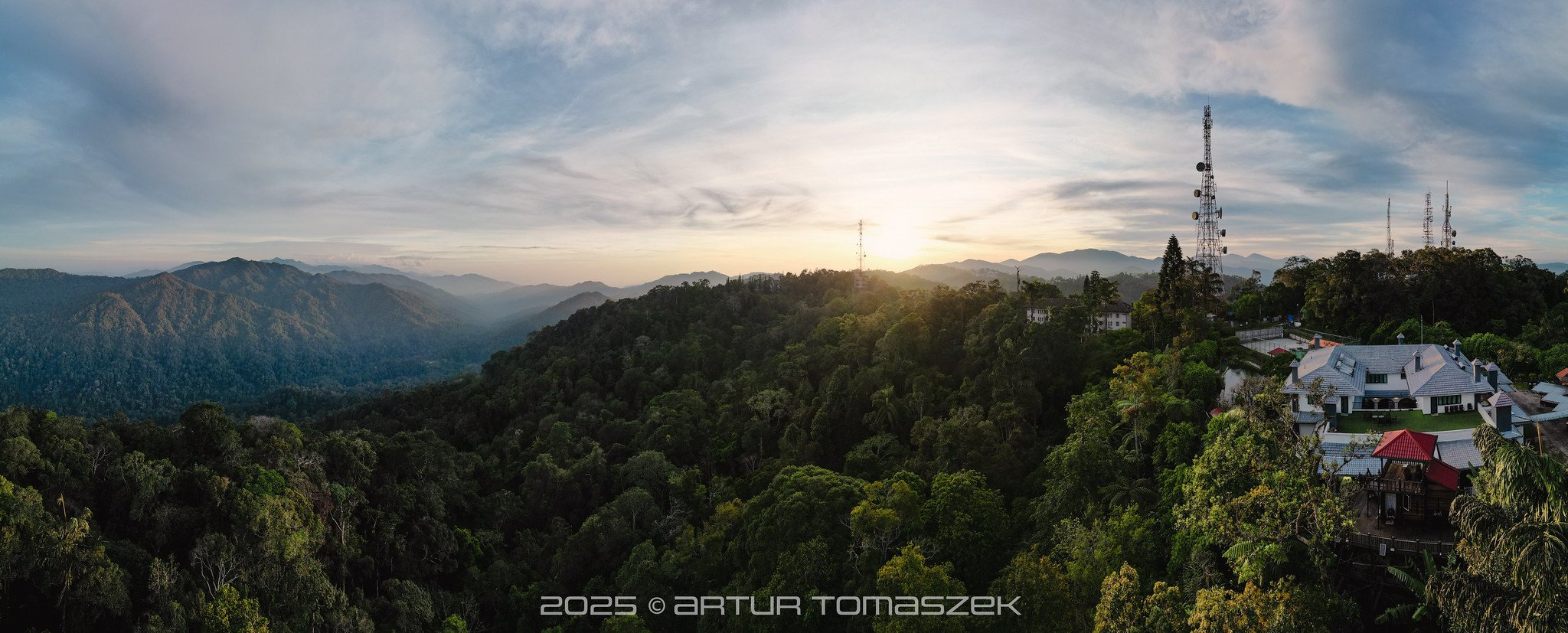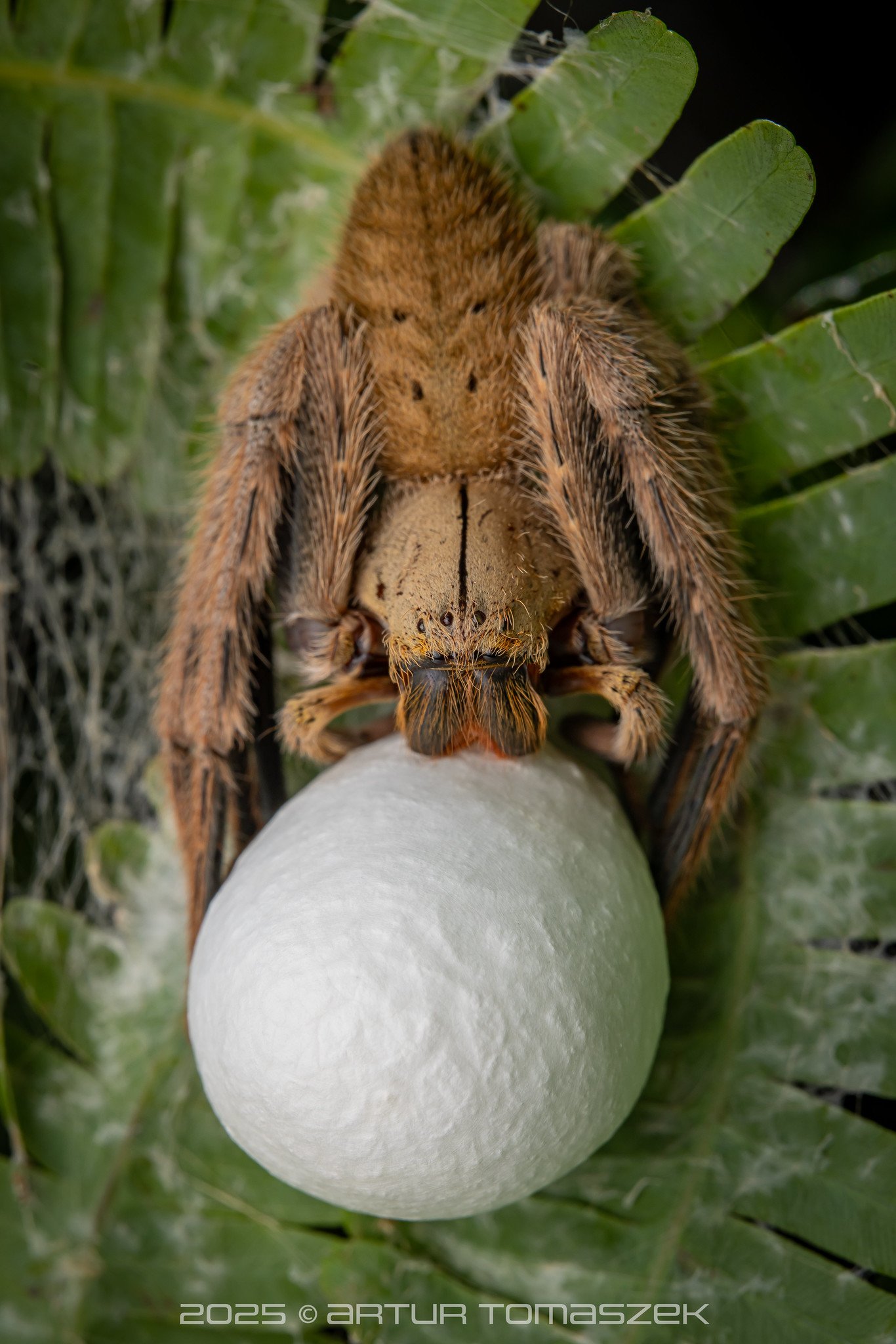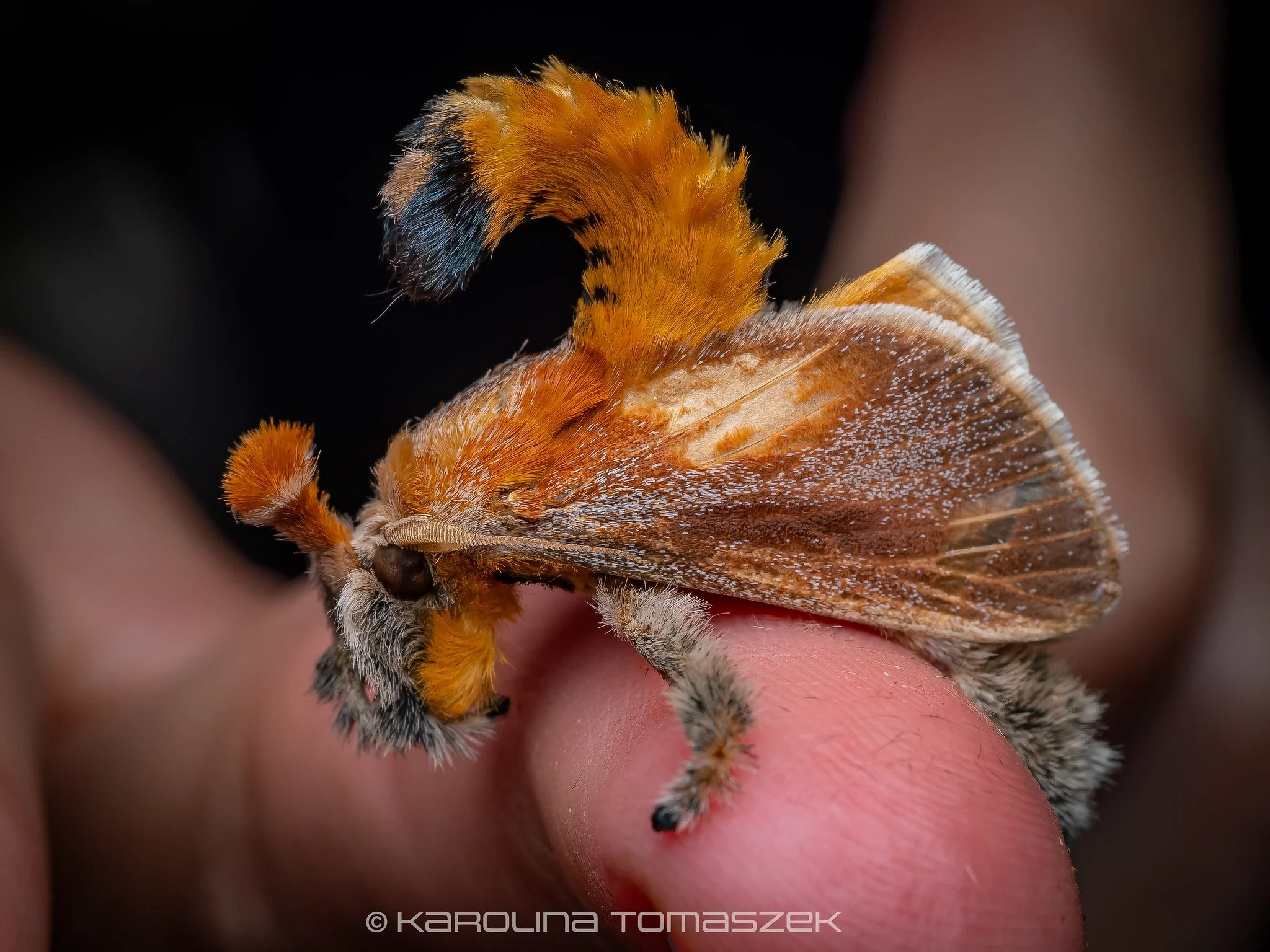Malaysia (Jan - Feb 2025)
Fraser’s Hill
KUALA LUMPUR
Trimeresurus purpureomaculatus
Our trip to Peninsular Malaysia started with a night in Kuala Lumpur, where we explored a mangrove swamp. The main target for this location was the mangrove pit viper (Trimeresurus purpureomaculatus), of which we encountered three individuals. We saw this species before in Singapore but they look different in Peninsular Malaysia. The mangroves weren’t very prolific in terms of any other wildlife, apart from… mosquitoes.
CAMERON HIGHLANDS
Cameron Highlands pit viper (Trimeresurus nebularis)
We wanted to visit Cameron Highlands from the moment we heard about this place. Artur hoped to see Cameron Highlands pit viper (Trimeresurus nebularis) which apparently used to be very common, but now it’s becoming scarce. We spent 3 nights at this location and we only saw one individual of this species at the end of the very last night (typical…).
Although Cameron Highlands were very chilly (some nights even 10°C and strong winds!), we encountered different species every day. The very first snake from this area, a mountain wolf snake (Lycodon butleri) was road cruised on our way up the mountain.
We saw quite a few Mirkwood forest slug snakes (Asthenodipsas lasgalensis) at different stages of development, including light brown juveniles. At present, A. lasgalensis is known only from montane areas of Peninsular Malaysia above 800 metres elevation, but is seems likely that its range may extend into montane forest habitats of southern Thailand (source). A couple of Tweedie's reed snakes (Macrocalamus tweediei) and Malayan mountain keelbacks (Hebius inas) also slithered their way to us.
There were some surprises too - from, sadly, dead and rather uncommon snakes, like Pseudoxenodon sp. and Hebius sarawacensis, to the most chunky coral snake we’ve ever seen, Calliophis nigrotaeniatus.
Gorgeous blue-eyed Robinson’s forest dragons (Malayodracon robinsonii) lurked in the shadows on all our night walks as well.
Although we did not consider Cameron Highlands particularly exciting in terms of the invertebrate and amphibian life as it seemed to be too cold and relatively dry, we did see a few beautiful species.
The omnipresent pitcher plants were definitely a highlight of this part of the trip.
Stunning sunset from Cameron Highlands
FRASER’S HILL
We spent over a week at MCM Nature Discovery Villa owned by Stephen Hogg, and just like before it was a very relaxing stay. This time, we booked the Sky Cabin and we absolutely loved it. Waking up to bird songs and the calls of siamangs resting right at our fingertips was an unforgettable experience. We had the best view of the mountains, especially during sunsets and sunrises.
Fraser’s Hill
Snake-wise, we were lucky on our very first night when we road cruised a large blue coral (Calliophis bivirgatus), and immediately after that a male Trimeresurus sabahi ssp. fucatus.
Blue coral snake (Calliophis bivirgatus)
Trimeresurus sabahi ssp. fucatus
After that, we had to work hard to see any snake at all. The conditions were rather dry but then it was very similar during our last visit, when we kept seeing different snakes every single day and night - and as opposed to Kuala Lumpur and Cameron Highlands, we weren’t alone on most nights as friends from different places gathered together during our stay there to check this area out as a bigger team (you know who you are!).
Saying this, it’s not like we saw nothing at all, a few herps did come out. 🙃 Interestingly, while our previous visit completely lacked cat snakes (Boiga spp.), this time we saw four (!) different species, mostly road cruised on a single rainy night throughout our entire stay.
Perhaps this time Mother Nature wanted us to appreciate and notice the other beautiful species of Fraser’s Hill as we encountered many more mammal and bird species than before and we found every single jumping spider target we hoped for (especially Stenaelurillus abramovi and a gorgeous undescribed Rhene sp. ; Hyllus sp. ‘Garfield’ was a lovely bonus too), which was absolutely phenomenal.
As for mammals, we finally got relatively close to a group of siamangs (Symphalangus syndactylus) so we could observe them calling other groups and swinging on the trees. They seem to prefer sitting high up on trees and before we mostly just heard their calls, so seeing them is not always a given. Pig-tailed macaques (Macaca nemestrina) were patrolling the areas near to town, where people taught them to expect a steady flow of food from the passing cars, while more shy white-thighed surilis (Presbytis siamensis) and dusky leaf monkeys (Trachypithecus obscurus) often hanged out with us near the Sky Cabin.
Birds are just something else in Fraser’s Hill - from chirping spiderhunters (Arachnothera magna), through beautiful red-bearded bee-eaters (Nyctyornis amictus) to a trio of stealthy black-thighed falconets (Microhierax fringillarius), winged friends kept us company all the time.
At the size of a sparrow, a black-thighed falconet is one of the smallest birds of prey on our planet. Stephen said a couple with their offspring took residence near his villa; there used to be four including the parents, but recently only three are being seen. Skilled hunters and truly affectionate birds by the looks of it, they very effectively picked up cicadas and moths recklessly abandoning the light trap during the day. If you hear a cicada scream during the day at Stephen’s place, it’s most likely become a falconet’s snack.
A black-thighed falconet with a cicada
Red-bearded bee-eater (Nyctyornis amictus)
Siamangs
Jumping spiders were not the only arachnids we found. From bark spiders (Caerostris sp.), through trapdoor spiders (Liphistius malayanus) and Malaysian purple-femur tarantulas named after Stephen Hogg (Coremiocnemis hoggi) to gorgeous comb-footed spiders (Phoroncidia lygeana), Fraser’s Hill never disappoints.
One cannot talk about Fraser’s Hill without mentioning the moths. Last time, even though we saw hundreds of moth species in a span of two weeks, we missed out on the Malaysian moon moth (Actias maenas) and Brahmaea hearseyi. This was one of the reasons we wanted to come back in January or February, which historically has been the best time for Saturnids and other large moth families in that location. We were lucky this time - a couple of moon moths came, one of which was relatively fresh and absolutely stunning, and there were a few Brahmaea hearseyi as well. There also were a few other Saturnids and plenty of other moth families.
Sadly, the prettiest moon moth flew away in the morning straight into the claws of a bird…
Malaysian moon moth (Actias maenas)
Other insects were out and about as well, including the stunning moss mantis (Haania confusa)!
More photos, as always, on Flickr:
Jumping spiders Malaysia
Special thanks to Tom Charlton (we dedicate all reed snake photos above to you), Yongi Ng (the jumping spider master) and Kurt Orion G (the one and only sifu of Malaysia) for your infinite wisdom and (mostly remote) support during this trip. ♥️































































































































































